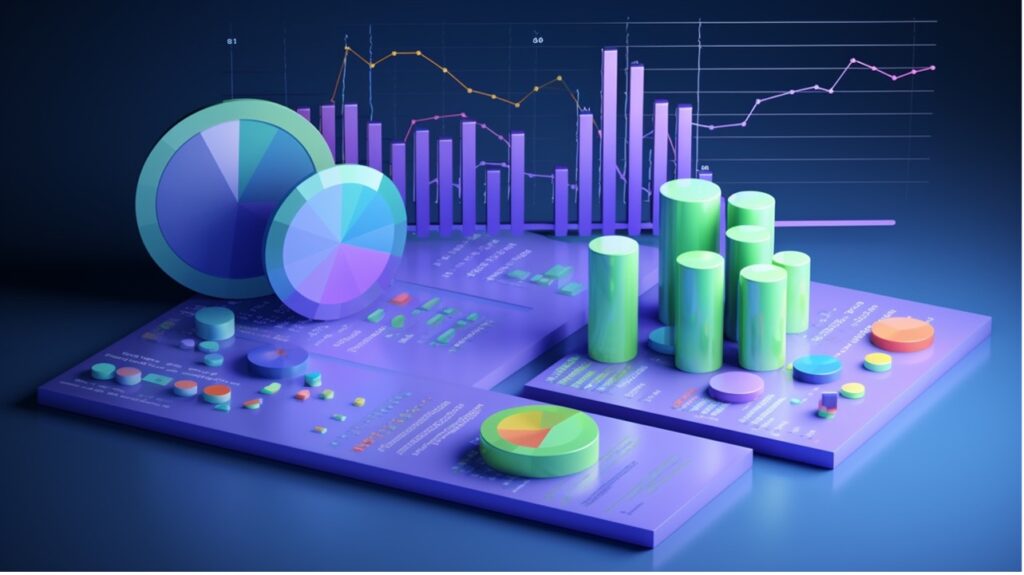
In the dynamic world of higher education, keeping a pulse on student applications and enrollment trends is crucial. In recent weeks, I have begun to shine a spotlight on, and illuminate, patterns to help drive strategic decisions. In a post just a couple of weeks ago I wrote about how I have been delving into PowerBI, TRULY a robust data visualization tool, and how it can transform raw enrollment data into actionable insights. Today’s post is about the importance of the ETL process for good clean data.
Understanding the Data Landscape
The journey always begins with data collection in a true ETL fashion. In higher education, data sprawls across various dimensions – from majors and colleges to student types and residency status and in multiple systems. The challenge lies in not just collecting this data but also in preparing it for analysis. This is one reason I started with data validation and cleansing our data months before starting our PowerBI dashboards. Cleaning and structuring data is a vital prelude, ensuring that what feeds into PowerBI is accurate, comprehensive, and in a format that can be used for analysis.
What is this ETL?
For those unfamiliar, ETL stands for Extract, Transform, Load. It’s the backbone of effective data management and plays a pivotal role in ensuring that your Power BI dashboards are not just visually appealing but also accurate and insightful. Let’s break it down:
Extract: Gathering Your Data
The journey begins with ‘Extraction’. This is where data is gathered from a multitude of sources such as different systems, different databases, or can even be seen as gathering your list of tables. Think of it as collecting puzzle pieces from different boxes. In a university, these sources could be student records, financial data, academic performance metrics, and so on, all housed across multiple platforms.
Transform: Shaping Your Data
Next up is ‘Transformation’. This step is all about making sure that the extracted data is clean, consistent, and in a format that is easy to analyze. It is akin to smoothing out the edges of our puzzle pieces and ensuring they fit together perfectly. This may involve standardizing data formats, correcting inaccuracies, or even creating new calculated fields that provide deeper insights.
Load: Placing Your Data Where It Belongs
Finally, we have ‘Loading’. This is where the transformed data is placed into a target repository. For me, it’s the combination of either a large table or a series of tables that can be easily related and ingested into PowerBI. Once I got past the thought of thinking about normalizing everything I was trying to ingest into PowerBI, the speed and accuracy at which I was able to create reports exponentially increased. It’s truly a different way of thinking from normal database design. However, this is the stage where our puzzle starts to come together, ready for the final picture to be revealed.
Why is ETL Important for Power BI Visualizations?
- Data Quality and Consistency: Without ETL, the data feeding into Power BI could be flawed or inconsistent, leading to unreliable visualizations. ETL ensures that the data you work with is up to the mark.
- Efficiency and Time-Saving: ETL automates the data handling process, significantly reducing the time and effort required compared to manual methods.
- Scalability and Flexibility: ETL allows for the integration of diverse data sources, providing a more comprehensive view for analysis. This is particularly beneficial in complex environments like universities.
- Enhanced Analytics: Clean, well-structured data leads to more meaningful and insightful visualizations in Power BI, aiding in better decision-making and strategic planning.
Creating the Visuals
Once you have your data in a format that is clean and ready to be imported, visualization is where data tells its story. For each metric, we chose a visualization type that best represents the underlying trend, whether it was bar charts, pie charts, trend lines, or tables with slicers.
Data in higher education is rarely straightforward. For instance, a change in how a major is categorized can skew trend analysis. In PowerBI, we can use filters and drill-downs to manage these nuances, ensuring our insights remain valid and relevant, but part of the fix is in the ETL process and cross-matching and managing such changes.
Interpreting the Visualization
The visualizations serve as a narrative of student dynamics. We must interpret them in the context of external factors like policy changes, economic trends, and societal shifts. For example, an increase in online course enrollment could correlate with technological advancements or changing student preferences.
Challenges and Limitations
No tool is without its limitations. PowerBI relies on the quality of data inputted. If you Inconsistent data collection methods or incomplete data sets can lead to misleading conclusions. Another factor is appearance and usability. A third key factor I have learned is buy-in, and at what level. Too low and decisions cannot be made and the data makes no sense. I started with our cabinet and they use the reports daily. Furthermore, visualizations, while powerful, are just one part of the decision-making process.
Conclusion
PowerBI empowers us to transform complex datasets into compelling visual stories. By tracking student enrollment trends through this lens, we can make more informed decisions that align with our institutional goals and adapt to the ever-changing landscape of higher education. Also, ETL is not just a behind-the-scenes process, but it is a critical foundation for any robust data visualization strategy, especially in tools like Power BI. For those in roles like institutional research and data management, understanding and implementing a solid ETL process can transform the way data is utilized, leading to more impactful and informed decisions.
Happy analyzing, with good clean data!
Brian M. Morgan
Chief Data Officer, Marshall University